Being immersed in the fitness industry provides me with a ton of different opportunities to experience different techniques, methodologies, and products. I recently had the privilege of a...
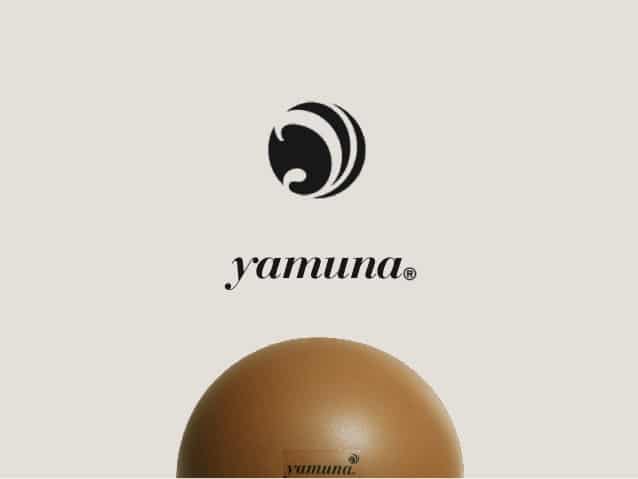

Being immersed in the fitness industry provides me with a ton of different opportunities to experience different techniques, methodologies, and products. I recently had the privilege of a...
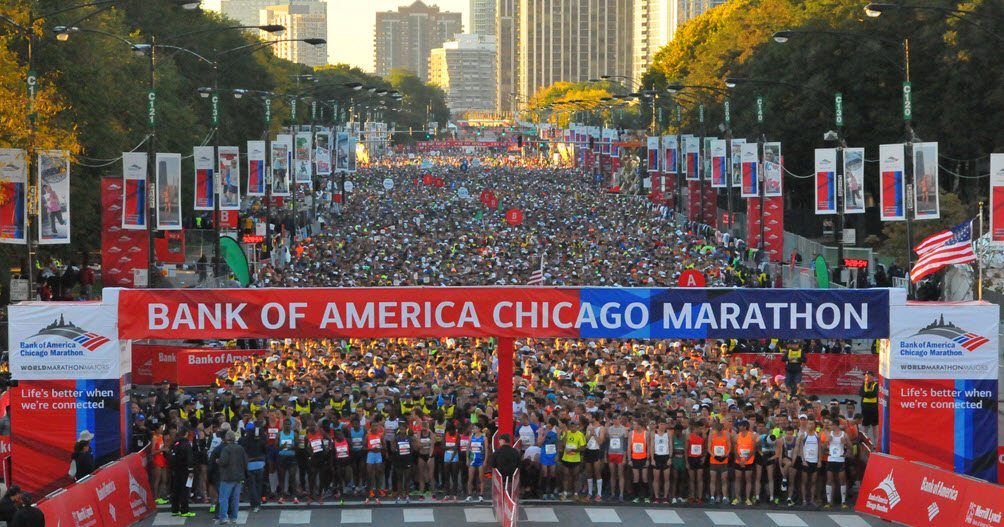
Leading up to the Chicago Marathon 2016 The Chicago Marathon provides an excellent course, plenty of support and, for me, a chance to visit home for a few days. It was no different for me this...

September 25 was going to be my day. The Ironman Augusta 70.3 triathlon was finally here. The race I had been training so hard for on one of my favorite courses. It was four-and-a-half months...
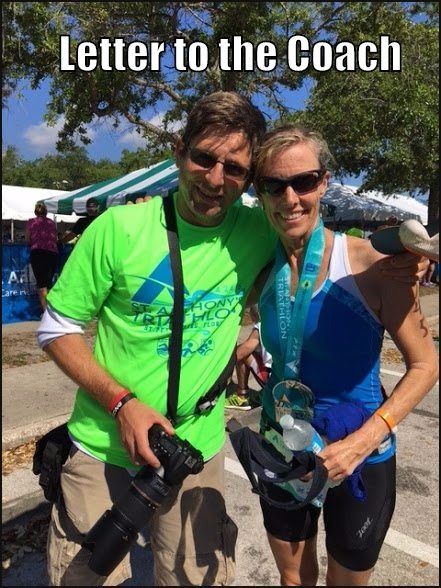
I have been an endurance coach for some time now. Once in a while, I receive an email from a client which chokes me up with pride. Today, I received one of those letters, so instead of sharing it...
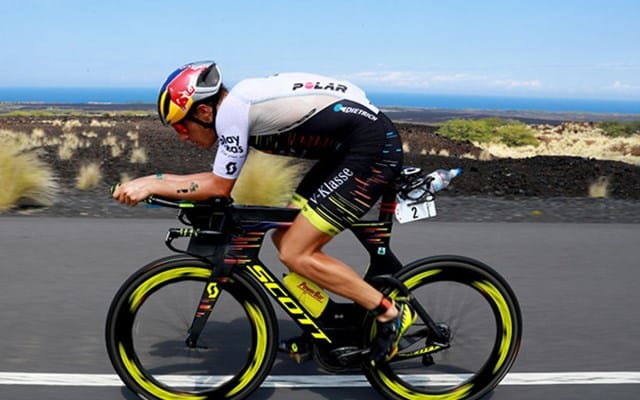
I found when looking for ways to get faster on the bike, is that there is so much information, from different coaches and experts, that it can be confusing and overwhelming. Personally, I...
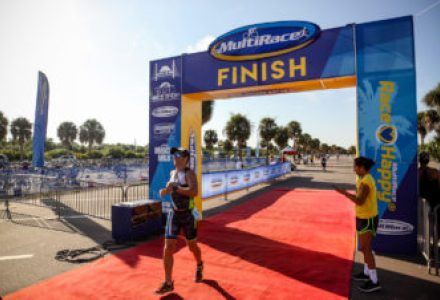
The previous post was a review of the FD3 Triathlon Series as if it was a product. Below you will find a more detailed account of my personal experiences during the race. Let me know in the...
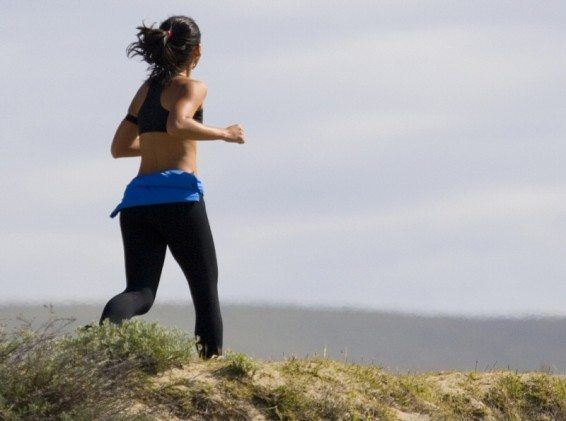
I can hear it now….”Know wonder they call you a Goof…you are crazy.”, “So, if I run slower I will get faster? You are out of your mind.” It was not to long ago I used to think the same thing, but as with everything I post, there are reasons and science to back it up.
Let’s face it, logic would dictate that pushing the pace of your easy days, as close to race pace as possible, would help you get fit faster and help you speed up, right? A lot of coaches, including myself, will tell you to run slow on your easy days, and easy days should be making up anywhere from 50-75% of your weekly mileage.
I have clients continuously asking me, “why are my easy days so slow?” The latest is my famous sit downs with my runners telling them to slow down after examining their data and finding them running tempo speeds during an easy day.
The answer to the question is what Arthur Lydiard and most other coaches would call the aerobic system. The aerobic system, or aerobic development, is the one of the most important fundamentals into unlocking your true potential.
Let us first check the stats on the energy contribution the aerobic system provides for races. As you can in the chart below, even the shorter events like the mile, over 80% of the energy required to run the race is produced via the aerobic system.
Aerobic training is the scientific fact that to move your body at higher intensities, the body needs to break down sugar and convert it to glycogen so it can be used as energy.
The aerobic system plus oxygen starts a chemical reaction known as Aerobic Glycolysis which continuously powers continuous endurance activities. In the aerobic system energy ATP is produced through Pyruvic Acid and Lipid/Protein fragments entering the Kreb Cycle and the Electron Transport Cycle.
Uh…what?
During aerobic respiration (yeah, that’s breathing) the body uses all the oxygen it needs to power the muscles. When you are running in your “aerobic zones” (easy runs), your muscles have enough oxygen to produce all the energy they need to perform.
See? Improving your capacity to transport and efficiently use all the available oxygen to produce energy will enable you to race faster since this makes up 85-99% of the energy needed to race.
Since running easy is aerobic development, what better way is there to train the aerobic system? There is none.
Capillary development – capillaries are the smallest of the body’s blood vessels and they help deliver oxygen and nutrients to the muscle tissues while exporting waste products out. The larger the number of capillaries you have surrounding each muscle fiber, the faster you can transport oxygen and carbohydrates to your muscles.
Aerobic training (easy running) increases the number of capillaries per muscle fiber, thus improving how efficiently you can deliver oxygen and fuel to your working muscles and how quickly they can clear waste products.
Myoglobin is a protein in the muscles that binds the oxygen that enters the muscle fiber. When oxygen becomes limited during intense exercise, myoglobin releases oxygen to the mitochondria to produce more energy.
The more myoglobin you have in the fibers of your muscles, the more oxygen is transported under aerobic stress. Like, uh, during a race. Aerobic training increases the amount of myoglobin you have in your muscle fibers.
Mitochondria are microscopic organelle found in your muscles cells that contribute to the production of ATP (energy). In the presence of oxygen, mitochondria breakdown carbohydrate, fat, and protein into usable energy.
Therefore, the more mitochondria you have, and the greater their density, the more energy you can generate during exercise, which will enable you to run faster and longer.
Aerobic training increases both the number and the size of the mitochondria in your muscle fibers.
Suffice it to say that aerobic development is the single most important factor to long-term development.
Of course, track workouts, VO2 max sessions, tempo runs and cross training will increase your fitness and are still incredibly important to racing faster. However, nothing will help improve continuously like developing the aerobic system.
Aerobic development is dependent upon running in your aerobic zones (for my runners Zones 1-3). This is why running faster on your easy days develop the aerobic system. Once you step out of those aerobic zones, on easy runs you diminish development of your aerobic system, but you also increase the chance for injury. Nope, two negatives do not make a positive in running.
This is one of the single biggest mistakes runners of all experiences make in their training.
As a coach and trainer I have always distinguished myself because I am always able to give my clients and readers the “why”. (Sometimes my clients end up telling me to just shut my mouth. when I am training with them because I am continuously telling them why they are doing each movement of an exercise or workout. I guess it may not be an advantage all the time. Go figure.)
Scientific research has been able to identify how the aerobic system adapts and responds to certain training paces. Physiologically we know:
It is pretty clear now right? Your optimal easy run pace for aerobic development is between 55 and 75 percent of your 5k pace, with the average pace being about 65 percent.
It’s also evident that running faster than 75% of your 5k pace on your long run has very little additional physiological benefit.
In fact, the research indicates that it would be just as advantageous to run slower as it would be to run faster. Running around half of your 5k pace is pretty easy right? Wouldn’t you know it, the evidence is clear that it still provides near optimal aerobic development.
Feel free to let me hear your feedback. I welcome any other case studies, personal experiences and other research as I am always learning. I provide you with the best content I can, but I have an open-mind and know that there may be other research out there that may negate information I post.
~IronGoof
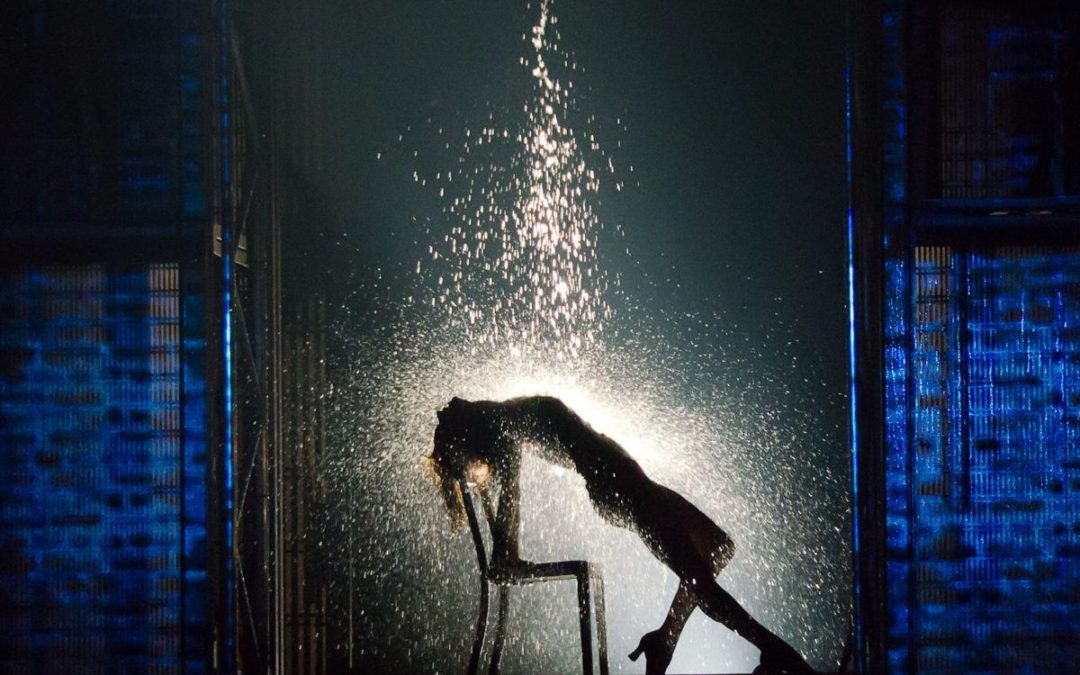
I was courted to review Flashdance: The Musical at the Straz Center for their opening night on Tuesday, but other commitments kept me from attending. Rather than give up my tickets and sacrifice a review I sent volunteers, Mrs. Miranda Lessie, Mrs. Amy Eck and Bennett Eck in my place.
This is my first Guest Blog as it is written by Miranda Lessie.
Flashdance: The Musical – Straz Center for the Arts, Tampa Florida. 19 Feb 2013
Move over Las Vegas, there is a new party in town and it’s called Flashdance. Can you remember the iconic water works scene in the original movie? You won’t have to imagine it for long once you sit down for this new musical.
If you love the 80’s music, hair styles, dancing and most of all the legwarmers, you will be right at home with this production. Even if you don’t adore these things, you will find yourself moving to the live orchestra which sounding more like an 80’s hair band than an orchestra. Perfect for this play.
The play starts off with a running start and gets right into the story line. It was a fast start for me who prefers more of a background building and character development. Once all the characters were introduced throughout the play, the story line begun to come alive and I fell in love with each character. Kudos to the Casting director who found the perfect character for each performer whom seemed to have been born to play their particular part. The leading lady Emily Padgett was a dead ringer for the original movie character.
I found some characters had a shaky start with their first song but each ended with a bang. The singing in the play was equal to, if not better than, the dancing. All the performers were superb singers, dancers and actors.
The set and lighting was a plus for this play. I never questioned what location we were at in the play because there was a huge display at the top of the stage at every scene change. My only question about the set is “just how did they do that water dance scene?” It was so perfect.
Costumes were exquisite but not over the top. They were very believable for the time period. They were also just on the edge of being rated a little more than PG-13. The language was appropriate for this type of play and slang was kept a very minimum.
As I walked out of the playhouse, I wondered why I didn’t attend more productions. I absolutely fell in love with this medium and will be back soon. The actors made this play but the scene and music made the actors. ~ Miranda Lessie
[embedplusvideo height=”302″ width=”400″ standard=”http://www.youtube.com/v/3YdQR54I0Og?fs=1″ vars=”ytid=3YdQR54I0Og&width=400&height=302&start=&stop=&rs=w&hd=0&autoplay=0&react=0&chapters=¬es=” id=”ep8091″ /]

 My coaches all have always tried to instill in me the importance of a good night sleep. Especially as the intensity and duration of my workouts have been increasing. The issue for me is that I have a phobia of growing older. What does one have to do with the other? I always feel like I am wasting my life away by sleeping. Think about it. As athletes we all want to experience life to the fullest which is why we train and race. Sleeping is eight-ten hours of time we could still be experiencing life and what the heck are we doing but laying there. What a waste! Or is it?
My coaches all have always tried to instill in me the importance of a good night sleep. Especially as the intensity and duration of my workouts have been increasing. The issue for me is that I have a phobia of growing older. What does one have to do with the other? I always feel like I am wasting my life away by sleeping. Think about it. As athletes we all want to experience life to the fullest which is why we train and race. Sleeping is eight-ten hours of time we could still be experiencing life and what the heck are we doing but laying there. What a waste! Or is it?
With an anticipated two Ironman Triathlons on the horizon for me, I decided to dig a little deeper and find out what happens during sleep and what benefits it gives us. I am not talking about the regular answers that we hear all the time; “it recharges the body”, “muscles grow during sleep not during workouts”, yada yada yada. I am not going to bore anyone with the “What is Sleep?” lecture. We all received that in high school biology and health class. I am just going to hit the nitty gritty about why we as athletes may need more sleep, because that is what I wanted to know.
Hormones & Muscle
During our waking hours, the body burns oxygen and food to provide energy. This is known as a catabolic state, in which more energy is spent than conserved, using up the body’s resources. When we sleep we move into an anabolic state – in which energy conservation, repair and growth take over. Levels of adrenaline and corticosteroids drop and the body starts to produce human growth hormone (HGH).
A protein hormone, HGH promotes the growth, maintenance and repair of muscles and bones by facilitating the use of amino acids (the essential building blocks of protein). Every tissue in the body is renewed faster during sleep than at any time when awake.
Immune system
I have always heard that sleeping more when fighting infectious illness aids recovery. Getting enough sleep can also help resist infection, as some studies of healthy young adults have shown that moderate amounts of sleep deprivation reduce the levels of white blood cells which form part of the body’s defense system.
A killer of cancer called TNF – tumour necrosis factor – also pumps through our veins when we are asleep. Research has shown that people who stayed up until 3am had one-third fewer cells containing TNF the next day, and that the effectiveness of those remaining was greatly reduced. So that little factoid hit me over the head like a ton of bricks.
JUST as the world is governed by light and dark, human beings also have an inbuilt body clock called the circadian rhythm. The circadian rhythm regulates all the processes of the body, from digestion to cell renewal.
Body temperature
Body temperature falls throughout the night. By about the sixth hour of sleep it has dropped to about three degrees below the temperature it was in the evening. At the same time, our metabolic rate drops too which if you’re trying to lose weight may not be a good thing, but it serves a purpose.
The skin  The top layer of the skin is made of closely packed dead cells which are constantly shed during day. During deep sleep, the skin’s metabolic rate speeds up and many of the body’s cells show increased production and reduced breakdown of proteins.
The top layer of the skin is made of closely packed dead cells which are constantly shed during day. During deep sleep, the skin’s metabolic rate speeds up and many of the body’s cells show increased production and reduced breakdown of proteins.
Since proteins are the building blocks needed for cell growth and for the repair of damage from factors like ultraviolet rays, deep sleep may indeed be beauty sleep.
Digestive system
The body requires a regular supply of energy and its key source is glucose(sugar). This is constantly burned up to release energy for muscle contraction, nerve impulses and regulating body temperature. When we sleep, our need for these energy reserves is marginal so the digestive system slows down to a sluggish pace. The immobility of our bodies promotes this. Hence, the reason for not eating too late. The acid and enzyme levels have dropped to a point where food is not digested as quickly.
Maybe all those coaches were right. We produce HGH to repair muscles, our immune systems fight cancer and diseases, our skin repairs itself and our digestive system cuts out, so we do not need to burn any sugar. It sounds like I have been looking at this all wrong. I should be sleeping in order to extend my life. Can you say epiphany? (Hopefully you can say it better than I can spell it. It didn’t come up in spell check)
After all the reading on sleep I have completed, I am really tired. Maybe I ought to get some sleep.
The Tampa Bay Bloggers had an opportunity to see Elf the Musical on opening night and as a new member I was thrilled at the chance to take part. Now as I am a new member I am not sure of the background of my fellow bloggers, but I do have a modest amount of training and experience in theater (www.bradminus.com), so I may be just a tad more specific especially on the acting, but nevertheless I hope my review will be informative enough to help you decide whether to see it or not. Just a little foreshadowing….go see it.
Elf the Musical is based on the 2003 holiday movie Elf starring Will Farrell about a human baby who found his way into Santa’s bag during his Christmas visit to a local orphanage. Since the boy was already an orphan, Santa and his elves decided to raise the child at the north pole just as they would any elf child. The problem was Buddy, the human boy, grew to be over six feet tall. After a small slip of the tongue by one of the other elves, Buddy learns that he is indeed human and asks Santa about his parents. It is then that Buddy decides to go and find his father in the big city of New York.
NETwork Presentations LLC’s production of this family Christmas musical was alive with high energy musical numbers, colorful set pieces and smooth transitions from scene to scene. In the past decade or two, Broadway and national tours have started to move toward high tech sets and stage work which include hgh intensive set changes, creative light and sound effects, and even some pyrotechnics. Very recently I have noticed a small shift back to a more classical route where the set pieces are simple but painted well, the lighting is simple and the music and sound are achieved by a live orchestra instead of musical tracks. This musical is a perfect example. This simpler style has shifted the responsibility of the quality of productions back to the performers and less to the designers of sets, sound and lighting. In my opinion it makes for a better show, but I may be a little biased.
The play opens up with Santa (Gordon Gray) sitting in his living room fighting with his television set. He opens the fourth wall and greets the audience as if we were sitting on the floor right in his living room. After subtly turning off his cell phone, he opens a book and prepares to tell us the story of Buddy the Elf. At the point the living room is whisked away to Santa’s workshop where the elves are preparing for Christmas. Gordon’s depiction of Santa throughout the play is wonderful. His energy and boastfulness helped me to get lost in the show and actually believe I was at the north pole.
Matt Kopec’s characterization of Buddy is spot on as his high energy, child like characterization makes the audience believe this six-foot boy really does believe he is an elf and is horrified when he finds out he is actually human. Matt’s singing voice is pure musical theater and was a joy to hear every time he opened his mouth. I found myself waiting impatiently for his next number.
The real treat came from the character of Jovie (Kae Hennies), who captures Buddy’s heart the moment he sees her in the office of his biological father, Walter Hobbs (Drew Culver). Jovie has to be coaxed in to singing during the number “A Christmas Song”, but when she finally decides to sing out, her voice beautifully resonates throughout the theatre and when paired with Buddy’s the duo create pure musical brilliance for any ear.
Other notable performances were by Michael, Buddy’s half brother played by Connor Barth who even as a young actor, had a mature voice for his age. He tended to get a little pitchy in the upper registers, but because of his characterization was easily missed and forgivable. Julia Louise Hosack played Emily Hobbs, Buddy’s step mother, also had a fantastic musical voice and she was able to lead Michael into musical duets that gave me the “warm fuzzies”. The connection and chemistry between these two well trained actors allowed me to believe they were really mother and son.
The only drawback of this production that tugged me out of my holiday nirvana, was the voice of Drew Pulver whom played Walter Hobbs, Buddy’s father. His performance was not inferior, it just did not mix well the rest of the ensemble in my humble opinion. It was obvious to the audience that most of the ensemble were trained in contemporary music or musical theater When Walter sang it was clearly operatic, to a point where the words were garbled and I couldn’t make out the lyrics. Unfortunately, every time he sang it was distracting and his voice did not meld with the rest of the ensemble.
This show is classical musical theatre with simply painted sets, wonderful acting, and is sure to bring a smile to you and your family should you decide to see it. It is a true Holiday treat.
There is a trend I jumped on early in January, right after I finished the Goofy Challenge. The Paleo Lifestyle. Most people would call it a diet, and if it was temporary than I would say they were right. At first I was a little spooked by it, but my friend and coach Amy Bennett Eck, dared me to try the lifestyle for 30 days and see what results I obtained and how I felt.
 |
| Before Paleo |
The first week was tough. I was lethargic, my workouts suffered, and I felt like I had lost a lot of strength and endurance. (Of course that might have also been from the Half Marathon and Marathon I ran the weekend before I started.) Something happened about the middle of the second week. I woke up on Wednesday and I felt better. Interesting thing was, it was immediate. I went to bed Tuesday night after strictly following Paleo for a week plus two days and I woke up on Wednesday, feeling like myself again. I’ll talk about the hi-level science in a minute, but let me just tell you I thought I could take on the world. The following Saturday I ran ten miles faster than I ever had. It was just amazing the energy I had. I don’t have that energy all the time, but I did for the next couple of weeks at least. Ever since then I have keeping a pretty strict Paleo Lifestyle at about 85-90%. The other 15% I attribute to pizza, beer, the occasional ice cream and a few items in my race nutrition.
 |
| On Paleo |
So what is Paleo? The word Paleo comes from the Paleolithic Era or the caveman era. It is basically eating as the caveman did, before processing, before grains, before even beans and legumes. It basically, consists of meats, vegetables, fruits, and nuts. There are some items that are what I would call, “on the line”, specifically, milk and butter only if they came from a grass fed cow. There are no grains, no legumes, and no other dairy. I really thought it was going to be tough and the first week was, but after I toughed out the first week, I really didn’t even miss the bread, pasta, corn, cheese, yogurt or rice. Sounds like a lot doesn’t it? Well let me give you my results; I lost 12 pounds and 4% body fat in that first month. Crazy huh? Because of the Goofy Challenge, my workouts were even cut back that month. Since then I have lost another 5 pounds, 3% more body fat, my race times are faster, I can run, swim and bike longer and I have found my love for cooking again.
Let me tell you about the results of my friend Susan Johnson-Velez. Susan is a lawyer and single mom that was a little overweight, and had a severe case of asthma. She started two months prior to me with just removing dairy, and then started Paleo strictly in December and January like me. Now, she is down 35 pounds and the three medications she took for her asthma has been reduced down to a seasonal herb. Isn’t that crazy? I watched this beautiful woman go from baggy dresses and jeans to mini-skirts and dresses and skinny jeans, tight tops and boots. She came with us as our sherpa for the Chicago Marathon last October and when I saw her again at Jet City Coffee in January, my jaw hit the floor. The difference was amazing, and she has only gotten more fit, thinner and hotter since then.
My instruction book for this lifestyle started with The Paleo Diet for Athletes first printing, but since then Joe Friel and Loren Cordain, Phd have updated it. For the edition I was using, Joel Friel, the father of triathlon training, was instructing the Paleo diet for everything except for pre and post workout meals, and race nutrition. I have not completed my read of the second addition, but from what I can tell, Joel is not adding suggestions for those meals to be Paleo as well.
Why Paleo? The theory is, that grains have two major disadvantages; One, they breakdown into sugar, which if you do not use the carbohydrates right away they end up creating imbalances which increases your insulin levels causing the metabolism to slow down and store fat. Second, a lot of grains contain gluten which is basically poison. If the grain, for example oatmeal, does not naturally contain gluten, then there is more than a possibility that it was packaged a facility that also packages grains that do have gluten causing transference. Interesting enough there is another risk of transference of gluten; through meat. If a cow is grain fed, then the meat may have a high level of gluten along with the milk produced. I have actually started buying meat from a farm in Texas that has only grass fed meat. Slanker’s Farms also has chickens, buffalo, and some fish as well. All of it natural without antibiotics, pesticides or hormones.
The benefits of Paleo start by eliminating all the excess sugar your body doesn’t need or use, and then instead of using sugar for energy it uses fat. Since fat is a lot more dense than sugar, the energy production lasts a lot longer, which means you last a lot longer. Can you imagine working out and being able to go a couple of extra miles, just because you want to? Can you imagine a new outlook on life, not to mention cooking? I found a lot deeper interest in cooking since I started Paleo. Also, depending on your body and where you are at the moment, for every pound of excess you rid your body of, it could translate into a 10-12 second per mile decrease in your running time.
There are a lot of resources out there on Paleo. I personally am only fond of books and articles written by Loren Cordain, Phd and Rob Wolf. There are plenty of great resources for recopies on the internet. Do you think you have to give up brownies? Here is my favorite recipe for Paleo Brownies;

Preheat oven to 325 degrees F
They are awesome, trust me.
Check out the books and articles online and see what you think. I suggest just thirty days, knowing that the first week to two weeks you will probably not feel great, but the energy will hit like electricity once your body converts from burning sugar to burning fat.
I hope you are able to extract some good information and that it may at least increase your interest in this healthy lifestyle.